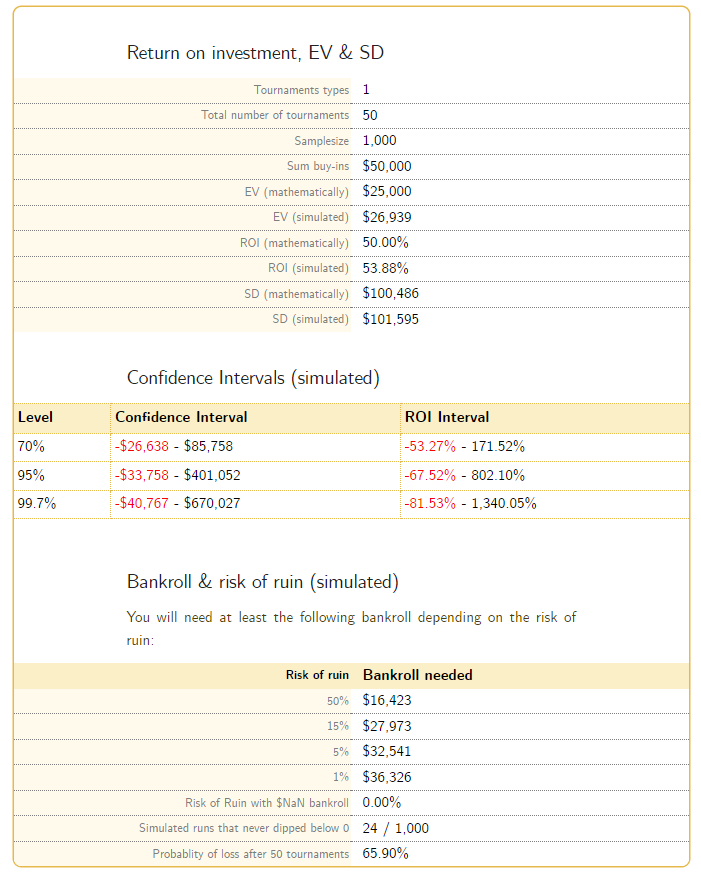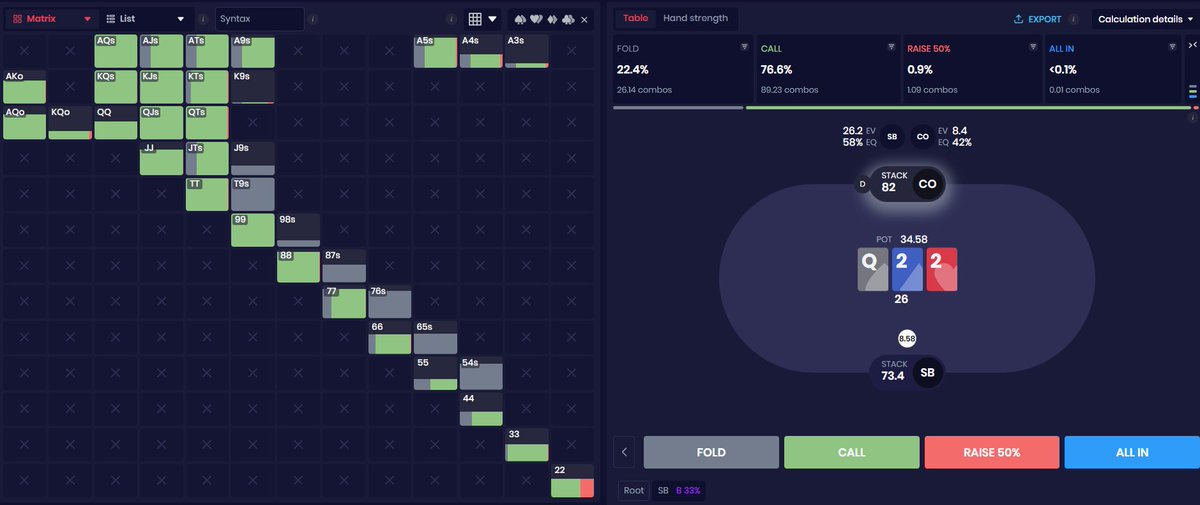In our first thread on preparing for the #WSOP we gave a general overview of things you might want to consider.
Today we'll look at tournament selection and bankroll management:
https://twitter.com/deepsolver/status/1658733532737601537
Today we'll look at tournament selection and bankroll management:
1/ During the WSOP you can expect to see very large field sizes of up to 10k runners. When looking at bankroll management for tournaments, players often neglect to factor in the effect that field size can have on variance.
2/ A common way to simulate variance is to use the prime-dope calculator found here: primedope.com/tournament-var…
3/ There are many ways to use this but let’s look at the effect of field size on variance. Imagine we’re going to play an average buy-in of $1k during the series and we’ll look to play at least 50 tournaments and assume an avg field size of 2500 players and ROI of 30%. 



4/ So here we can see that over 50 mtts, that we can expect to have a losing series over 75% of the time, potentially losing as much as $45,000.
5/ Let’s change this a bit by reducing the field size to 1000 players, keeping the other parameters the same. 

6/ The numbers look a bit better here, we’re now only having a losing series 61% of the time. This is a very high probability of having a losing series despite being selective with our field size.
7/ What if we increase our ROI? Let’s take a look at a player with 50% ROI that plays a field size of 2500…
We can see that they now have a 65.9% of having a losing sample compared to the 30% ROI player.
We can see that they now have a 65.9% of having a losing sample compared to the 30% ROI player.

8/ If this player now chooses to play a smaller average field size of 1000, their probability of loss drops to 55.5% 

9/ So the key takeaway here is that we want to be make sure that we’re a pretty big winner in the tournaments that we’re playing. This will increase our EV and reduce the chance that we having a losing series. Field size also has a pretty big impact on the variance.
10/ Another factor that we can consider is the option of being selling some of our tournament action at a markup. Assuming we play $50,000 worth of buyins and sell at a markup of 1.15, this would equate to saving $14,375 of buy-ins.
11/ 1.15 markup means that we’re selling at $1.15 for every 1% of action that we sell. We’re essentially locking in an ROI of 15% on 1/4 of our total buyins. Of course this means that we’re giving up some EV. But we greatly reduce the risk of our series.
12/ To think of this is imagine that we showed up and played all the tournaments but sold 100% of our action at 1.15MU. We would put up none of the buy-ins and make a guaranteed profit of $7500. Some great players are able to charge higher markup, making even more from selling.
13/ Of course most players typically want to have a piece of whatever they’re playing. So they sell less than that.
14/ Another way that players typically reduce their risk by swapping with other players. We need to trust that the players we swap with will pay their swap out. (Many cases of this issue occurring in the past). We could be giving up EV if these other players are worse than us.
15/ So before you start firing your buy-ins away during the #WSOP series, make sure you consider some options to reduce your exposure as it can get very expensive very quickly.
If you're looking to work on you game before the series, look no further! Grab a free trial of our solver here: deepsolver.com
@threadreaderapp unroll
• • •
Missing some Tweet in this thread? You can try to
force a refresh

 Read on Twitter
Read on Twitter

















